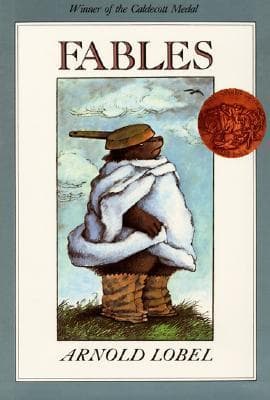
Book Review Summary: Fables
Introduction
Fables, written by Arnold Lobel, is a collection of short, original fables with fresh and unexpected morals. These fables poke subtle fun at human foibles through the antics of animals, offering timeless lessons that children can benefit from. With beautiful illustrations by Lobel himself, Fables has been widely praised for its wit, humor, and educational value. In this article, we will delve into the author's background, analyze readers' opinions, and explore the reasons why Fables is recommended and not recommended.
About Arnold Lobel
Arnold Stark Lobel was a renowned American author of children's books. Among his most popular works are the Frog and Toad series and Mouse Soup, which won the Garden State Children's Book Award from the New Jersey Library Association. Lobel's writing style was known for its simplicity and ability to captivate young readers. His illustrations, often featured in his books, added depth and humor to his stories. Fables showcases Lobel's talent for crafting engaging tales with valuable life lessons.
Analysis of Views
- Timeless morals: Readers appreciate the timeless morals found in each fable, which provide children with valuable insights on human behavior and conduct. The fables offer a fresh perspective on familiar themes, making them both entertaining and educational.
- Humor and sly pokes: Many readers find the humor in Fables to be subtle and sly, making it enjoyable for older preschoolers and up. The fables poke fun at human foibles through the antics of animals, offering a lighthearted approach to exploring complex issues.
- Engaging illustrations: Lobel's illustrations are highly praised for their ability to capture key elements of each fable. They feature colorful images that enhance the storytelling experience, making Fables a delightful read-aloud book for families and classrooms.
- Discussion prompts: The stories in Fables serve as great discussion prompts for children, encouraging them to think critically about the morals presented and apply them to their own lives. This makes it an excellent resource for parents, teachers, and librarians looking for books that foster intellectual growth.
- Writing prompts: The original fables in Fables offer inspiration for students to develop their own fables, either as writing prompts or as a creative outlet. The book's focus on morality and lessons makes it a valuable addition to literature curriculums.
Reasons for Recommendation
- Age-appropriate content: Fables is recommended for children aged 4 to 9, making it suitable for young readers who are beginning to explore moral stories. The book's humor and engaging illustrations capture their attention while providing valuable lessons that resonate with their age group.
- Educational value: Fables is highly recommended for school and public library collections due to its educational value. The book offers a unique perspective on classic fables and can be used as a supplementary resource in literature classes or as part of storytelling sessions.
- Timeless morals: The timeless morals found in Fables make it a book that can be enjoyed by children of different generations. The lessons presented in each fable have stood the test of time and continue to resonate with readers today.
- Engaging illustrations: Lobel's illustrations are a standout feature of Fables, capturing the essence of each fable with vibrant colors and expressive animal characters. The illustrations enhance the storytelling experience and add depth to the narratives.
Reasons for Not Recommendation
- Harsh lessons: Some readers have expressed concerns about certain fables containing lessons that they perceive as harsh or judgmental towards certain characters. For example, one fable involving a pelican and a crane has been criticized for its portrayal of social failure and its potential impact on children who struggle with social interactions.
- Lack of punch: A few readers have found some of the fables in Fables lacking in punch or impact compared to other classic fables like Aesop's Fables. While these stories are still enjoyable, they may not leave the same lasting impression on readers who are seeking a more profound narrative experience.
Conclusion
Fables by Arnold Lobel is a collection of short, original fables that offer timeless morals and subtle humor about human foibles through the antics of animals. With engaging illustrations by Lobel himself, Fables has been widely praised for its wit, educational value, and ability to serve as discussion prompts and writing prompts for young readers. While some readers have expressed concerns about certain fables containing harsh lessons or lacking punch compared to other classic fables, the majority agree that Fables is a valuable addition to children's literature, offering valuable lessons and entertainment for young readers aged 4 to 9.